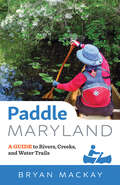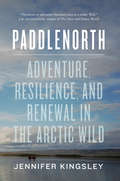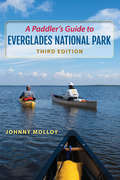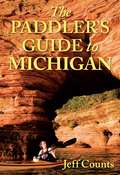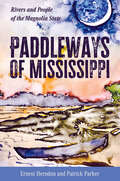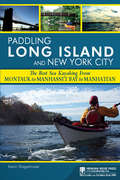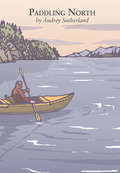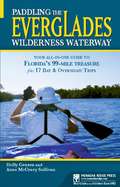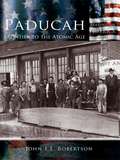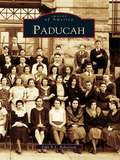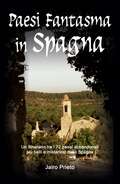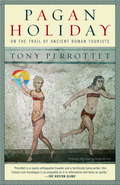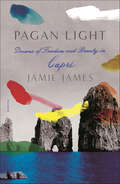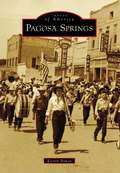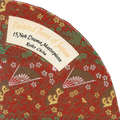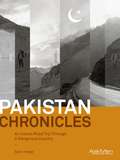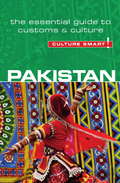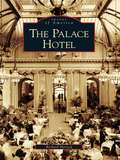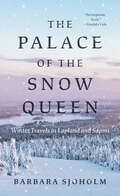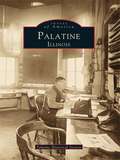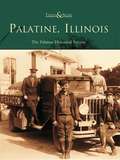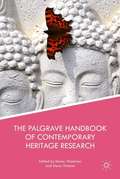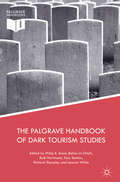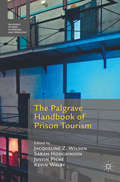- Table View
- List View
Paddle Maryland: A Guide to Rivers, Creeks, and Water Trails
by Bryan MacKayExplore the natural beauty of Maryland by water.With the Chesapeake Bay—the largest estuary in the United States—the Potomac, Monocacy, and Patapsco Rivers, and countless streams, creeks, swamps, and marshes, Maryland is an ideal locale for people to take to the water and enjoy the natural beauty of the Free State.In Paddle Maryland, lifelong Marylander and devoted paddler Bryan MacKay presents twenty-two of his favorite canoe and kayak trips. From lazy floats down the Potomac to swamp excursions on the Eastern Shore, each trip has been selected for its incredible scenery and ample opportunities to observe nature. Included are both tidal and nontidal paddling trips, and MacKay, an ecologist, describes the wildlife and vegetation you will encounter along the way. Considering biodiversity, conservation, and climate change, MacKay also discusses what these issues mean for Maryland’s waterways and their inhabitants.With its beautiful illustrations and wealth of practical advice and information, this indispensable guide will appeal to all who love to explore the natural wonders of Maryland with a paddle in their hands.Paddle Maryland is a companion guide to Hike Maryland and Cycle Maryland.
Paddlenorth
by Jennifer KingsleyIn an adventure of a lifetime, Jennifer Kingsley and her five companions canoe through one of the planet's most rugged settings. They battle raging winds, impenetrable sea ice, treacherous rapids, and agonizing sores and blisters while contending with rising tensions among the group. But they also experience the lasting joy of grizzly sightings, icy swims, and the caribou's summer migration. Woven through this spellbinding narrative are often-harrowing accounts of the journeys of earlier explorers, some of whom never made it back home. Paddlenorth paints an indelible portrait of the spectacular Arctic landscape, rendered with a naturalist's eye and an artist's sensibility, and offers an eloquent exploration of how wilderness changes us.
A Paddler's Guide to Everglades National Park
by Johnny MolloyWhether forging uncharted territory or slipping along marked canoe trails, get ready to experience more than 400 miles of creeks, bays, marshes, and the Gulf of Mexico. This indispensable guide for the ultimate adventure by canoe or kayak now includes GPS coordinates and twelve new paddle routes.
The Paddler's Guide to Michigan
by Jeff CountsA travel guide for the paddling-inclined. The Paddler’s Guide to Michigan takes users to the best quiet waters in the Great Lakes state, including rivers, inland lakes, and the Great Lakes. The guide is full of helpful suggestions for how to have the best paddling trips, even at the most popular destinations. Just because a river can be paddled, it doesn’t mean the experience will be a good one, so outdoorsman and journalist Jeff Counts has researched and paddled all these waters to bring you tips and details to make your outings as enjoyable as possible. He offers comprehensive information to help those who own kayaks arrange their own trips as well as info for the more casual kayaker who wishes to work with outfitters.
Paddleways of Mississippi: Rivers and People of the Magnolia State
by Ernest Herndon Patrick ParkerMississippi rivers and creeks have shaped every aspect of the state’s geology, ecology, economy, settlement, and politics. Mississippi's paddleways—its rivers, rills, creeks, and streams—are its arteries, its lifeblood, and the connective tissues that tie its stories and histories together and flood them with a sense of place and impel them along the current of time. The rivers provide structure for the telling of stories. In Paddleways of Mississippi: Rivers and People of the Magnolia State, readers will discover flowing details of virtually every waterway in the state—the features, wildlife, vegetation, geology, hydrology, and specific challenges to be expected—alongside many wonderful historical and social accounts specific to each system. Interviews and oral histories enliven these waterways with evocative scenery, engaging anecdotes, interesting historical tales, and personal accounts of the people and communities that arose along the waterways of Mississippi. Part natural history, part narrative nonfiction, Paddleways of Mississippi will appeal to outdoor enthusiasts, anglers, naturalists, campers, and historians, and is suitable for novices as well as experts. Told together, the pieces included are a social and ecological history that exposes and deepens the connection coursing between the people and the rivers.
Paddling Long Island and New York City
by Kevin StiegelmaierPaddling Long Island is the only book on the market to depict routes and destinations across the whole of Long Island and the New York City area. And it showcases 50 of the very best. It is a diverse selection, too. After all, according to skill level, weather, personal mood, and other factors, a paddler may want open, fast water one day, but a quiet, protected experience at another time, and something in-between later on. It's all here, from New York City to the far eastern tip of Long Island's Montauk Point.What's more, the book's guidance and language are geared to wide-ranging skill levels: the novice will be enlightened and encouraged, and the seasoned kayaker or canoeist will be engaged and engrossed. That is because the author's intimate, lifelong knowledge of the area's waterways shines in his descriptions of natural and social histories, humorous stories, personal anecdotes, and beautiful black-and-white photographs.For example, among the 50 entries, the author tells of Cold Spring Harbor, nestled between Oyster Bay and Huntington, and steeped in maritime history. He gives some back story on Little Neck Bay, home to littleneck clams but also where he says you will likely see a fin flip or a tail splash as the striped bass catch their prey. And he will take you to Setauket Harbor and tell you why it's his personal paddling favorite. But not all waxes euphoric, as there are practical considerations when striking out on water, and this guidebook is a good friend to have along. It describes the best times to paddle the 50 harbor, inlet, bay, and river routes; alerts readers to each paddle's difficulty level and estimated length; and suggests side trips, optional trip extensions, and alternate routes to paddle depending on weather conditions. Easy-to-follow maps, complete with GPS coordinates and driving directions, add to this book's high value. In addition, the author provides contact information on local paddling clubs, outfitters, and Internet links. And a final extensive section on personal safety, boat and equipment preparedness, and related topics makes this book an invaluable tool.
Paddling North
by Audrey Sutherland Yoshiko YamamotoIn a tale remarkable for its quiet confidence and acute natural observation, the author of Paddling Hawaii begins with her decision, at age 60, to undertake a solo, summer-long voyage along the southeast coast of Alaska in an inflatable kayak. Paddling North is a compilation of Sutherland's first two (of over 20) such annual trips and her day-by-day travels through the Inside Passage from Ketchikan to Skagway. With illustrations and the author's recipes.
Paddling the Everglades Wilderness Waterway
by Anne Mccrary Sullivan Holly GenzenThe Everglades Wilderness Waterway winds an enthralling path through rivers, bays, and streams on the southwestern edge of Everglades National Park. Rich with wildlife and scenic beauty, it also poses many challenges for paddlers. Canoeists and kayakers must deal with wind, waves, limited campsites (in the form of "chickee" platforms over the water and historic groundsites), and no fresh water. As veterans of this complex passage, authors Holly Genzen and Anne Sullivan turn those limitations into glorious, safe adventure. Some out-and-back paddles lead to the rivers and bays of the Everglades National Park's interior; others wind to Gulf Coast sites; still others loop around islands, mangrove forests, or other natural phenomena. The authors provide marker-by-marker route descriptions (both north to south and south to north), and comprehensive information on safety, supplies, campsites, and navigation. They also chronicle the waterway's wildlife, social history, and origin of place names encountered along the way.
Paducah: Frontier to the Atomic Age
by John E.L. RobertsonOne of the last frontier towns east of the Mississippi, Paducah took center stage in the drama of an expanding United States despite a late start and a penchant for independence and self reliance. The Kentucky river city played no small part in the rise of river commerce and its successor, the railroads. From river packets to enriched uranium, its history is marked by victory over disastrous floods and a headlong rush toward a future embracing new technology.Paducah: Frontier to the Atomic Age tells the story of a community torn apart from the start between Chickasaw and American claims, then Confederate and Union invasions. Exploring the expanding city streets and the ever-busy waterfront, readers will meet natives Quintus Quincy Quigley, chronicler of events on the eve of the Civil War; the "Dean," Dr. Robert Gordon Matheson, who revolutionized two-year colleges; and Mrs. Houston "Dolly" McNutt, among the first female mayors in Kentucky.This unique volume also recounts the story of the city's central role in nineteenth-century history, thanks to its strategic location at the mouth of the Tennessee River on the Ohio. At that time, the Civil War struggle for control of border states tested Paducah's loyalty even while the rest of Kentucky fought to remain neutral, and Reconstruction brought new challenges in race relations to a region deeply divided by the ghosts of slavery. In the twentieth century, the city developed tremendously with the advent of new industry and was the adopted home of President Truman's pioneering Vice President Alben Barkley, among the most effective and groundbreaking statesmen to fill that office.
Paducah: Frontier To The Atomic Age (Images of America)
by John E.L. RobertsonLocated in the westernmost area of Kentucky known as the Jackson Purchase, Paducah has witnessed tremendous change since its beginnings in the early 19th century. Founded by William Clark of the Lewis and Clark expedition, Paducah officially became a town in 1830 and gained the McCracken County seat a year later. Thanks to the area's river resources, the arrival of the New Orleans and Ohio Railroads, and the installment of the telegraph line, Paducah experienced considerable growth, despite the occurrence of natural disasters, before the Civil War when Grant seized the town. Since then, Paducah has become a bustling center of industry, education, and tourism.Images of America: Paducah contains a multitude of photographs that provide a glimpse into the city's period of growth, featuring the contributions of the rivers, the development of accredited Kentucky community colleges, and the unique events, such as the annual quilt show, which attracts 30,000 visitors.
Paesi Fantasma in Spagna
by Jairo PrietoQuesto libro raccoglie i paesi spopolati più spettacolari e meglio conservati della geografia spagnola, dove potrai scoprire la loro storia e le cause per le quali vennero abbandonati, riconoscere strade, templi, case, cimiteri, piazze, fontane, ecc., e lasciarti meravigliare dalla bellezza dell’ambiente. Inoltre, il libro include oltre 350 fotografie, così come precise indicazioni e coordinate GPS per raggiungere il punto esatto dei diversi paesi. Questo non è solo un libro da leggere, ma ti invita anche a viaggiare, a uscire dalla solita routine e a intraprendere un’appassionante avventura nel cuore e nell’anima di quest’altra Spagna tanto dimenticata quanto misteriosa. Buon viaggio.
Pagan Holiday: On The Trail of Ancient Roman Tourists
by Tony PerrottetThe ancient Romans were responsible for many remarkable achievements--Roman numerals, straight roads--but one of their lesser-known contributions was the creation of the tourist industry. The first people in history to enjoy safe and easy travel, Romans embarked on the original Grand Tour, journeying from the lost city of Troy to the Acropolis, from the Colossus at Rhodes to Egypt, for the obligatory Nile cruise to the very edge of the empire. And, as Tony Perrottet discovers, the popularity of this route has only increased with time.Intrigued by the possibility of re-creating the tour, Perrottet, accompanied by his pregnant girlfriend, sets off to discover life as an ancient Roman. The result is this lively blend of fascinating historical anecdotes and hilarious personal encounters, interspersed with irreverent and often eerily prescient quotes from the ancients--a vivid portrait of the Roman Empire in all its complexity and wonder.From the Trade Paperback edition.
Pagan Light: Dreams of Freedom and Beauty in Capri
by Jamie JamesA New York Times Book Review Editors' Choice"Pagan Light is mesmerizing. Every detail is compelling. I felt I was reading a family history of a family far more interesting than mine." --Edmund White, author of Our Young ManA rich, intimate embrace of Capri, which was a magnet for artistic renegades and a place of erotic refugeIsolated and arrestingly beautiful, the island of Capri has been a refuge for renegade artists and writers fleeing the strictures of conventional society from the time of Augustus, who bought the island in 29 BC after defeating Antony and Cleopatra, to the early twentieth century, when the poet and novelist Jacques d’Adelswärd-Fersen was in exile there after being charged with corrupting minors, to the 1960s, when Truman Capote spent time on the island. We also meet the Marquis de Sade, Goethe, Mark Twain, Oscar Wilde, Compton Mackenzie, Rilke, Lenin, and Gorky, among other astonishingly vivid characters. Grounded in a deep intimacy with Capri and full of captivating anecdotes, Jamie James’s Pagan Light tells how a tiny island served as a wildly permissive haven for people—queer, criminal, sick, marginalized, and simply crazy—who had nowhere else to go.
Pagosa Springs (Images of America)
by Kristin BowenWhen the first government expeditions came through the southwest Colorado region, the Ute Indians were living in a wide area that included the hot springs that they had named Pah-gosa. The Army chose the hot springs as the first--though short-lived--location of Fort Lewis. After the Army left, forward-thinking speculators incorporated the town in 1891. These early settlers believed that the natural wonders nestled in the beauty of the San Juan Mountains could be developed into a world-class spa resort. Timber and ranching were the dominant industries and ways of life in the area throughout the 20th century. The images presented in this book feature these industries, as well as town businesses, churches, schools, surrounding forests, residents, events, and celebrations. Pagosa Springs has become the spa destination early settlers envisioned, yet it holds onto and celebrates its Western heritage.
Painted Fans of Japan
by Reiko ChibaThe chief purpose of this modest little book is to present for Westerners some of the gorgeous paintings found on fans used in tne traditional Japanese Non drama. Painting as limited to conform to the fan shape has teen practiced for hundreds of years in Japan, even hy such immortal artists as Sotatsu and Korin. Until now, however, there has heen no popularly availahle volume of reproductions to reveal the almost limitless possibilities in color, design, and perspective within this restricted form of painting, The artists whose works are reproduced in this book are unknown, and the time when the works were painted can only he estimated as early (1601-1741), middle ( 1742-1791 ) , or late ( 1792-1867 ) Totugawa, the period of Japanese history that extended from the beginning of the seventeenth century to well past the middle of the nineteenth.
Pakistan: In the Shadow of Jihad and Afghanistan
by Mary Anne WeaverEmphasis on the past fifteen or so years.
Pakistan Chronicles
by Adam HodgeAgainst the backdrop of fear-mongering media and against the advice of his family, Adam Hodge set out to explore the real Pakistan in a rare road trip through the country that turned into an extended stay. In Pakistan Chronicles, Hodge takes us from Lahore to Islamabad and through the Taliban-controlled northern regions of Pakistan, where few Westerners have dared travel in recent years. What he discovered was a country that defies our expectations and forces us to confront our fears and preconceptions about the unknown. Pakistan Chronicles is a wake-up call to travelers everywhere.
Pakistan - Culture Smart!
by Safia HaleemPakistan is a land with a unique history, formed by migrating peoples who have left their footprint in its diverse cultures, languages, literature, food, dress, and folklore. The country is besieged by bad news, but despite the political turmoil the everyday life of its people is more stable, rich, and rewarding than the media headlines would lead you to believe. A myriad local festivals and celebrations and a vibrant cultural life go unremarked. Pakistan has the eighth-largest standing army in the world and is the only Muslim-majority nation to possess nuclear weapons, but few know that it is also the home of two unique schools of art. This complex nation consists of various ethnic groups, each with its own individual cultures and subcultures, but which are unified by the common values of hospitality, honor, and respect for elders. Pakistani society has extremes of wealth and poverty, and daily life for most people is full of difficulties, yet everyone knows how to cope with crises. Creative and adaptable, Pakistanis are among the most self-reliant people in the world, bouncing back after major catastrophes. Culture Smart! Pakistan takes you behind the headlines and introduces you to many of the country's little-known traditions. It describes the vitally important cultural and historical background, shows you how modern Pakistanis live today, and offers crucial advice on what to expect and how to behave in different circumstances. This is an extraordinary country of enterprising, tough, and passionate people. Earn their trust and you will be rewarded many times over.
Palace Hotel, The
by Richard HarnedWhen it opened in 1875, the Palace Hotel was the largest and most luxurious hotel in the world, a perfect symbol of one of the most remarkable eras in San Francisco history. Built at a time when Nevada's fabulously rich silver mines were pouring millions of dollars each month into San Francisco, it typified the color and grandiose extravagances of the whole bonanza period. After the original hotel was destroyed in the 1906 earthquake and fire, a successor Palace Hotel took its place and remains one of the most prestigious hotels in San Francisco today.
The Palace of the Snow Queen: Winter Travels in Lapland and Sápmi
by Barbara SjoholmAn exploration of the winter wonders and entangled histories of Scandinavia&’s northernmost landscapes—now back in print with a new afterword by the author After many years of travel in the Nordic countries—usually preferring to visit during the warmer months—Barbara Sjoholm found herself drawn to Lapland and Sápmi one winter just as mørketid, the dark time, set in. What ensued was a wide-ranging journey that eventually spanned three winters, captivatingly recounted in The Palace of the Snow Queen. From observing the annual construction of the Icehotel in Jukkasjärvi, Sweden, to crossing the storied Finnmark Plateau in Norway, to attending a Sámi film festival in Finland, Sjoholm dives deep into the rich traditions and vibrant creative communities of the North. She writes of past travelers to Lapland and contemporary tourists in Sápmi, as well as of her encounters with Indigenous reindeer herders, activists, and change-makers. Her new afterword bears witness to the perseverance of the Sámi in the face of tourism, development, and climate change. Written with keen insight and humor, The Palace of the Snow Queen is a vivid account of Sjoholm&’s adventures and a timely investigation of how ice and snow shape our imaginations and create a vision that continues to draw visitors to the North.
Palatine, Illinois
by Palatine Historical SocietyPalatine was incorporated as a village at a meeting of voters held April 2, 1866. The town then experienced a slow, steady growth, and the first development on a large scale started around 1920. In 1925 farms were selling for $400 an acre, a sewer system had just been completed, the streets were paved with reinforced concrete, and elaborate street lighting had been installed. Through the years, the Palatine Historical Society has developed an extensive collection of photographs dating back close to the beginning of Palatine Township and theVillage of Palatine. Many of these treasured photos were donations from the families of earlier residents. Efforts have been made by Alice Rosenberg and the Palatine Historical Society to identify the people and places in the historic photos contained herein. Through the use of this collection, the Palatine Historical Society has put together a fascinating book that serves as a tribute to the preservation efforts put forth in the Village ofPalatine. In the 133 years since the Village of Palatine was incorporated, numerous annexations have occurred, and many subdivisions have been built. The small, farm village located about 35 miles from the center of Chicago, out on the prairie, is now a suburb with a population of 62,000.
Palatine, Illinois
by The Palatine Historical SocietyMoving toward the future while maintaining its historic past, Palatine, Illinois, was incorporated in 1866 and has seen great change and growth through the years. That change is captured here in a collection of vintage and contemporary images that trace the evolution of this Midwestern farm village into a big city suburb.Authored by the Palatine Historical Society and Alice Rosenberg, Palatine, Illinois: Then and Now illustrates how the area looked when it was first settled, how it developed through the years, and what it has become. From the generations of Palatine residents who lived, worked, and played in the area to the thriving municipality they created, the images contained in this book bring to life a fascinating evolution.
The Palgrave Handbook of Contemporary Heritage Research
by Emma Waterton Steve WatsonThis book explores heritage from a wide range of perspectives and disciplines and in doing so provides a distinctive and deeply relevant survey of the field as it is currently researched, understood and practiced around the world
The Palgrave Handbook of Dark Tourism Studies
by Richard Sharpley Philip R. Stone Leanne White Rudi Hartmann Tony SeatonThis handbook is the definitive reference text for the study of ‘dark tourism’, the contemporary commodification of death within international visitor economies. Shining a light on dark tourism and visitor sites of death or disaster allows us to better understand issues of global tourism mobilities, tourist experiences, the co-creation of touristic meaning, and ‘difficult heritage’ processes and practices. Adopting multidisciplinary perspectives from authors representing every continent, the book combines ‘real-world’ viewpoints from both industry and the media with conceptual underpinning, and offers comprehensive and grounded perspectives of ‘heritage that hurts’. The handbook adopts a progressive and thematic approach, including critical accounts of dark tourism history, dark tourism philosophy and theory, dark tourism in society and culture, dark tourism and heritage landscapes, the ‘dark tourist’ experience, and the business of dark tourism. The Palgrave Handbook of Dark Tourism Studies will appeal to students and scholars with an interest in aspects of memorialisation and morality in sociology, death studies, history, geography, cultural studies, philosophy, psychology, business management, museology and heritage tourism studies, politics, religious studies, and anthropology.
The Palgrave Handbook of Prison Tourism
by Kevin Walby Justin Piché Sarah Hodgkinson Jacqueline Z. WilsonThis extensive Handbook addresses a range of contemporary issues related to Prison Tourism across the world. It is divided into seven sections: Ethics, Human Rights and Penal Spectatorship; Carceral Retasking, Curation and Commodification of Punishment; Meanings of Prison Life and Representations of Punishment in Tourism Sites; Death and Torture in Prison Museums; Colonialism, Relics of Empire and Prison Museums; Tourism and Operational Prisons; and Visitor Consumption and Experiences of Prison Tourism. The Handbook explores global debates within the field of Prison Tourism inquiry; spanning a diverse range of topics from political imprisonment and persecution in Taiwan to interpretive programming in Alcatraz, and the representation of incarcerated Indigenous peoples to prison graffiti. This Handbook is the first to present a thorough examination of Prison Tourism that is truly global in scope. With contributions from both well-renowned scholars and up-and-coming researchers in the field, from a wide variety of disciplines, the Handbook comprises an international collection at the cutting edge of Prison Tourism studies. Students and teachers from disciplines ranging from Criminology to Cultural Studies will find the text invaluable as the definitive work in the field of Prison Tourism.
